13.6: Central Nervous System
- Page ID
- 13279
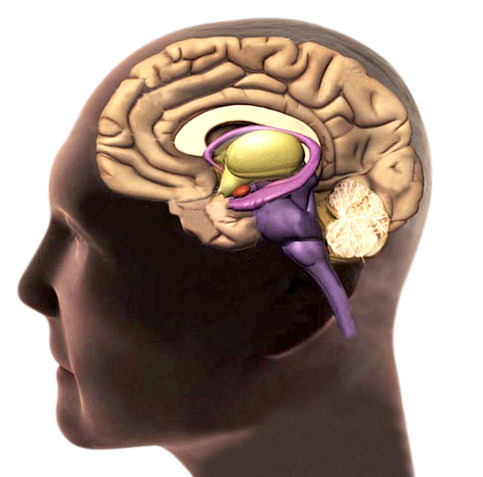
The human brain. The "control center." What does it control?
Practically everything. From breathing and heartbeat to reasoning, memory, and language. And it is the main part of the central nervous system.
Central Nervous System
The nervous system has two main divisions: the central nervous system and the peripheral nervous system (see Figure below). The central nervous system (CNS) includes the brain and spinal cord (see Figure below). You can see an overview of the central nervous system at this link: vimeo.com/2024719.
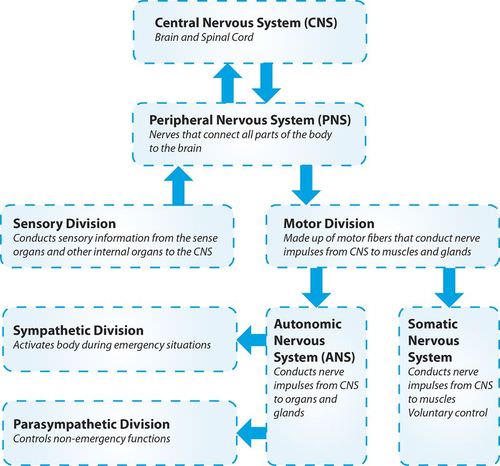 The two main divisions of the human nervous system are the central nervous system and the peripheral nervous system. The peripheral nervous system has additional divisions.
The two main divisions of the human nervous system are the central nervous system and the peripheral nervous system. The peripheral nervous system has additional divisions.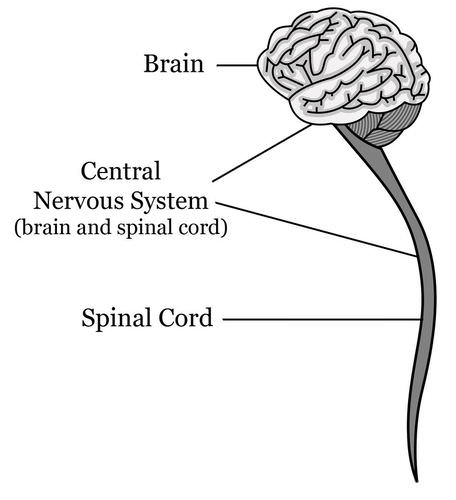 This diagram shows the components of the central nervous system.
This diagram shows the components of the central nervous system.The Brain
The brain is the most complex organ of the human body and the control center of the nervous system. It contains an astonishing 100 billion neurons! The brain controls such mental processes as reasoning, imagination, memory, and language. It also interprets information from the senses. In addition, it controls basic physical processes such as breathing and heartbeat.
The brain has three major parts: the cerebrum, cerebellum, and brain stem. These parts are shown in Figure below and described in this section.
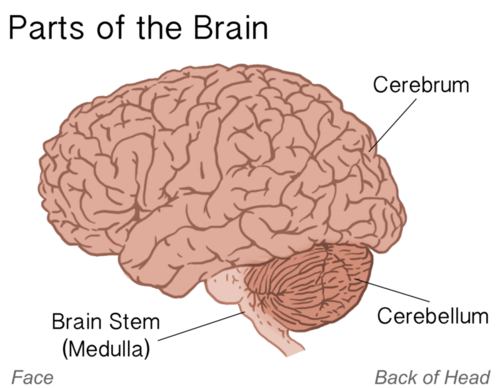 In this drawing, assume you are looking at the left side of the head. This is how the brain would appear if you could look underneath the skull.
In this drawing, assume you are looking at the left side of the head. This is how the brain would appear if you could look underneath the skull.- The cerebrum is the largest part of the brain. It controls conscious functions such as reasoning, language, sight, touch, and hearing. It is divided into two hemispheres, or halves. The hemispheres are very similar but not identical to one another. They are connected by a thick bundle of axons deep within the brain. Each hemisphere is further divided into the four lobes shown in Figure below.
- The cerebellum is just below the cerebrum. It coordinates body movements. Many nerve pathways link the cerebellum with motor neurons throughout the body.
- The brain stem is the lowest part of the brain. It connects the rest of the brain with the spinal cord and passes nerve impulses between the brain and spinal cord. It also controls unconscious functions such as heart rate and breathing.
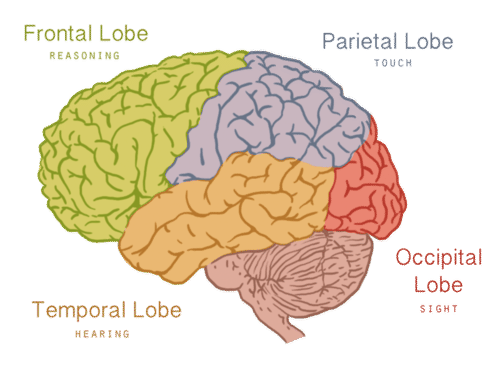 Each hemisphere of the cerebrum consists of four parts, called lobes. Each lobe is associated with particular brain functions. Just one function of each lobe is listed here.
Each hemisphere of the cerebrum consists of four parts, called lobes. Each lobe is associated with particular brain functions. Just one function of each lobe is listed here.Spinal Cord
The spinal cord is a thin, tubular bundle of nervous tissue that extends from the brainstem and continues down the center of the back to the pelvis. It is protected by the vertebrae, which encase it. The spinal cord serves as an information superhighway, passing messages from the body to the brain and from the brain to the body.
Humanoid Robot Brains
The smartest people in the world have spent millions of dollars on developing high-tech robots. But even though technology has come a long way, these humanoid robots are nowhere close to having the "brain" and motor control of a human. Why is that? Learn about the motor control processes in the human brain, and how cutting-edge research is trying to implement it in robots below.
Science Friday: Face Time: How quickly do you judge a face?
How fast do you judge somebody by their face? In this video by Science Friday, Dr. Jon Freeman discusses how the brain quickly creates character assessments of people and the effects these assessments may have.
Summary
- The central nervous includes the brain and spinal cord.
- The brain is the control center of the nervous system. It controls virtually all mental and physical processes.
- The spinal cord is a long, thin bundle of nervous tissue that passes messages from the body to the brain and from the brain to the body.
Review
- Name the organs of the central nervous system.
- Which part of the brain controls conscious functions such as reasoning?
- What are the roles of the brain stem?
- Sam’s dad was in a car accident in which his neck was broken. He survived the injury but is now paralyzed from the neck down. Explain why.
| Image | Reference | Attributions |
 |
[Figure 1] | Credit: Laura Guerin Source: CK-12 Foundation License: CC BY-NC 3.0 |
 |
[Figure 2] | Credit: Hana Zavadska Source: CK-12 Foundation License: CC BY-NC 3.0 |
 |
[Figure 3] | Credit: User:Grm wnr/Wikimedia Commons, modified by Sam McCabe;Laura Guerin Source: commons.wikimedia.org/wiki/File:Central_nervous_system.svg ; CK-12 Foundation License: Public Domain; CC BY-NC 3.0 |
 |
[Figure 4] | Credit: Laura Guerin Source: CK-12 Foundation License: CC BY-NC 3.0 |
 |
[Figure 5] | Credit: Laura Guerin;Flickr:FaceMePLS Source: CK-12 Foundation ; http://www.flickr.com/photos/faceme/5448327286/ License: CC BY-NC 3.0; CC BY 2.0 |

